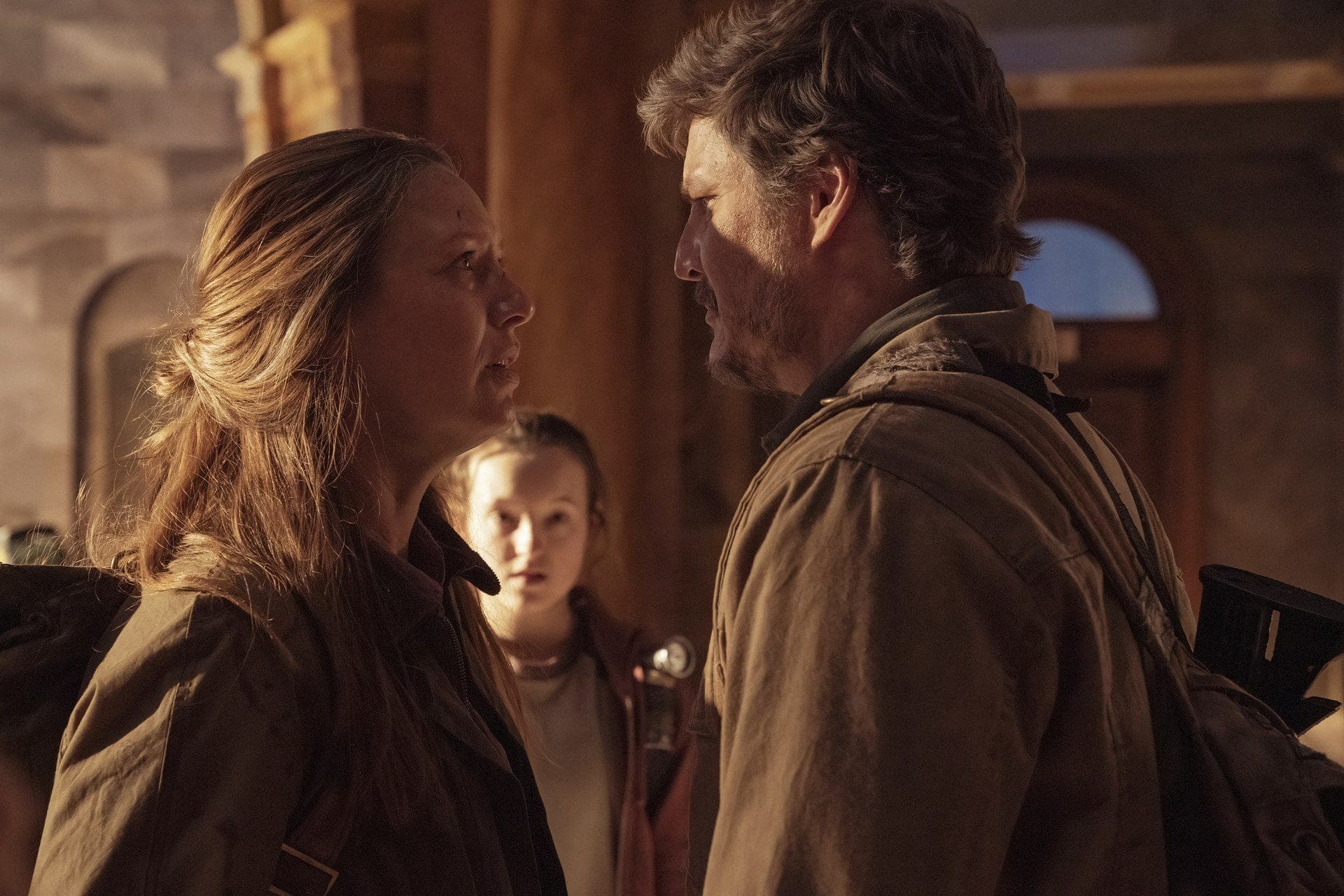
The Last Of Us’ series premiere concluded with Joel (Pedro Pascal, The Mandalorian) beating a soldier to death. This serves as an effective contrast for the video game the series is based on, because while you spend much of the action/adventure game beating and shooting people, the series is able to explore new narrative avenues and build up to Joel’s violent side, treating it like a ticking time bomb.
This contrast continues in the second episode, ‘Infected.’ As Joel and Tess (Anna Torv, Mindhunter) keep an untrustworthy eye on the supposedly immune Ellie (Bella Ramsey, Hilda), Tess tries to inspect Joel’s punching fist. He dismisses her concerns, assuming it’s only a hairline fracture. Still, those few punches having an impact on him physically is a testament to the impact these acts of violence will have on these characters. Joel will do what he’s capable of, and even push beyond that, but he’s not an action star or a professional boxer. He’s a miserable, aging alcoholic.
In establishing his limited physical capabilities at the beginning, the show sets up the stakes for our first encounter with the infected. The infected in question is a “clicker,” a blind and particularly gnarly-looking fellow that uses echolocation to find prey. This encounter takes place in an environment that, like most in the show, is recreated from the game, but here the formal distinctions between video games and cinema are compounded. In the game, the player is accustomed to breaking glass as a means of distracting the infected.
However, when Joel does this in the show, the camera, untethered from Joel, is able to linger on the broken glass. For a time, we only see the clicker which has lost sight of our hero. Then, after cutting to a wide shot, the camera pans, and the focus shifts from the clicker in the background to Joel in the foreground. We’re briefly comforted upon seeing him, but this comfort fades to a new source of tension as the camera loses sight of the clicker and Joel has to slowly reload his gun.
It’s a marvelous moment, and that this episode is the live action debut of Neill Druckmann is only a further testament to how The Last Of Us wishes to explore this new medium. However, an especially compelling difference between the show and the game thus far is cordyceps infection itself. When it was revealed that the spores from the game would be absent in the show, there was a little confusion. It was something that made the infection distinct, and now it’s gone.
However, in its place is something notably more frightening. It was something alluded to in the first episode, as we saw some spooky tentacles coming from an infected person’s mouth. Initially, I assumed this was a minor cosmetic change that wouldn’t impact the story. After this episode, that notion isn’t just wrong. Rather, those creepy tentacles have redefined the infection to a scale fans possibly couldn’t imagine. Fans should forget the Rat King from the second game: those tentacles form an unholy connection between infected that redefines the world of The Last Of Us as we know it.
The previously mentioned formal distinctions would have been enough to make this show a worthwhile endeavor, but after this episode, the great unknown that awaits Joel and Ellie just became even more unknown, and a helluva lot scarier.

